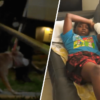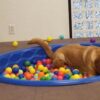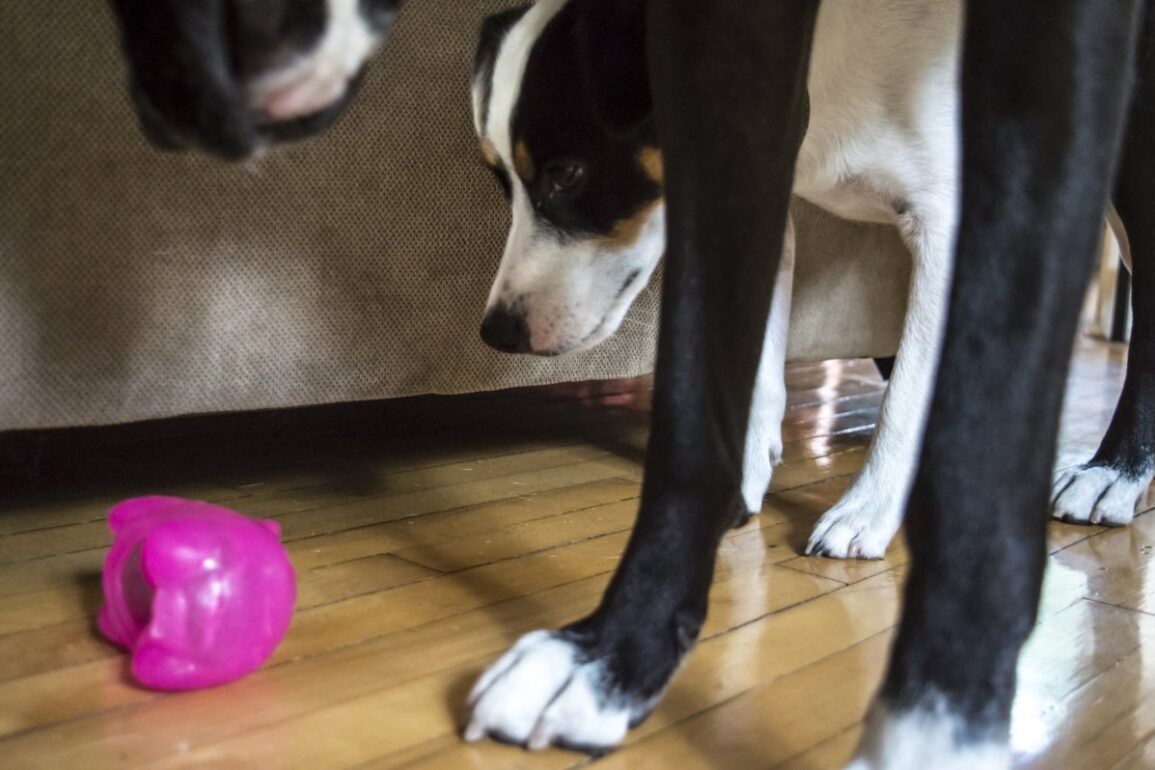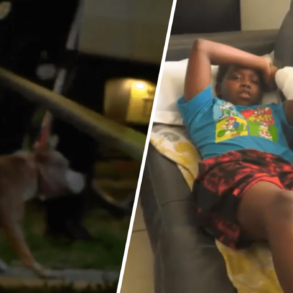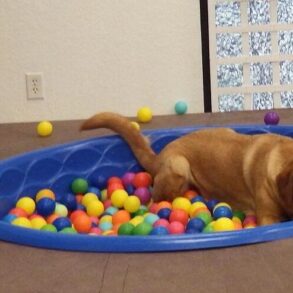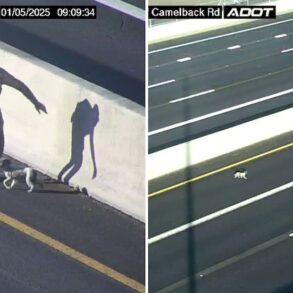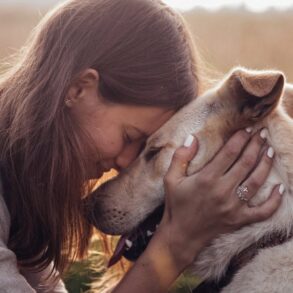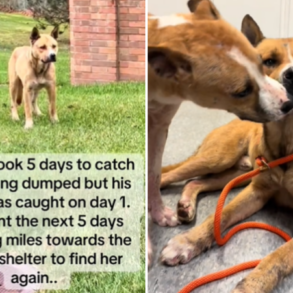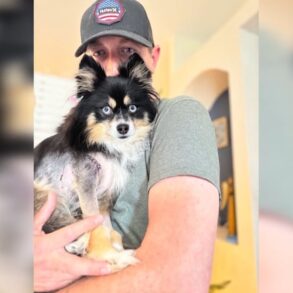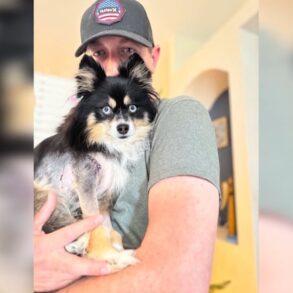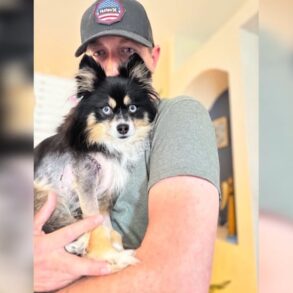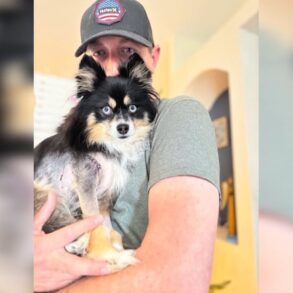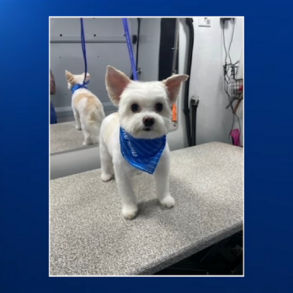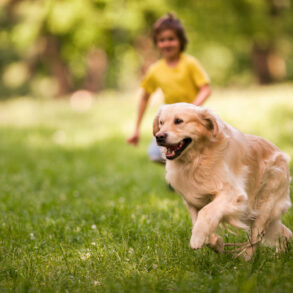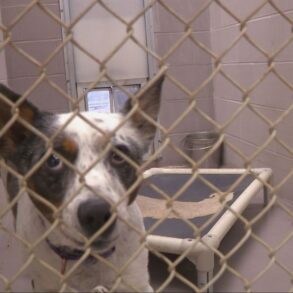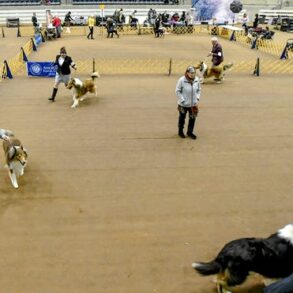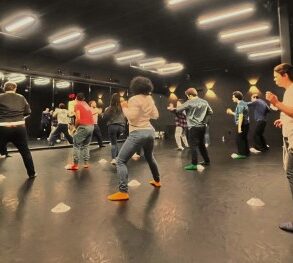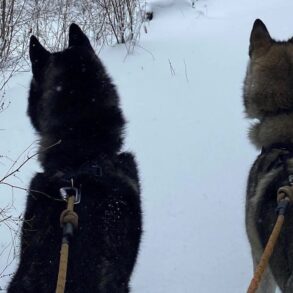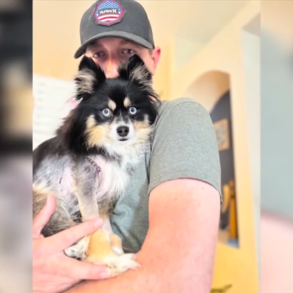Dogs are often treated like children, and after watching this video, you may begin to understand why—because they act like them.
One dog’s reaction to sharing has been caught on camera, racking up 1.3 million views since December 30.
The clip, shared by Tessa (@tess..jacobs), shows a dog named Ruby lying on the floor as she seemingly tries to pretend another dog isn’t chomping on her bone. However, she cannot stop side-eyeing the other dog and looks visibly uncomfortable.
The text layered over the video says, “POV—the in-laws come over and steal your toys.” But like kids, canines seem to want what they can’t have, as the caption states Ruby had three other bones to choose from.
“The best part is that toy was probably untouched for the last month,” said one comment with over 40,000 likes.
“Oh, she is FUMING,” said another user, while a third added: “My dog doesn’t EVER touch his toys until another dog does, and suddenly it’s his prized possession.”
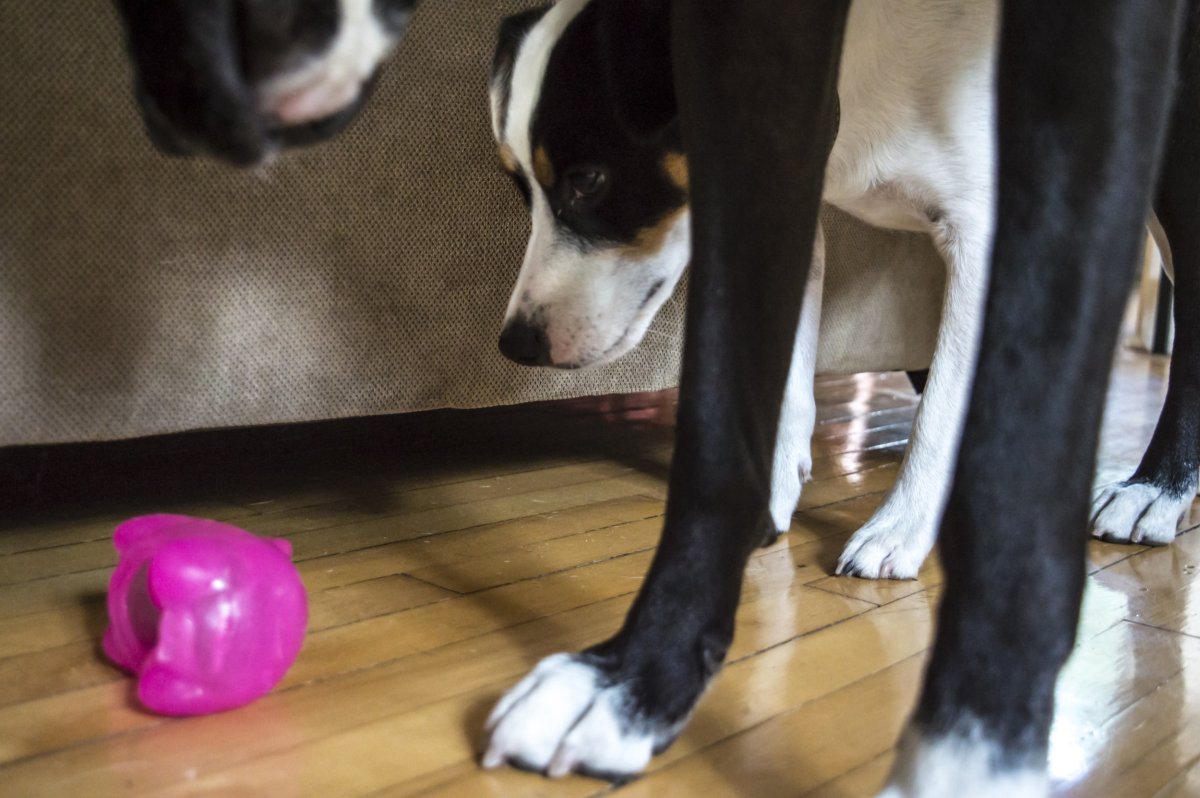
A stock image of dogs looking at a toy. A video of a dog begrudgingly sharing one has gone viral on TikTok.
Milaspage/iStock/Getty Images Plus
How to Teach Your Dog to Share
Newsweek reached out to Joe Nutkins, who is the director at Dog Training For Essex and Suffolk, England. The accredited dog trainer and canine behaviorist has provided the following tips on how to teach your dog to share:
- Provide Access to Plenty of Toys – Including toys that are similar or the same. Dogs will often want the one another dog has, but if they don’t have access to that type of toy, it will make training that much harder!
- Encourage Relaxation During Toy Play – Help dogs feel relaxed while playing with their toy; if another dog frequently takes their toy, they may become overprotective (e.g., resource guarding) or give up on playing with toys.
- Create Space for Focused Toy Play – This may involve keeping both/all dogs on a lead or placing them on opposite sides of a baby gate to reduce worry about sharing.
- Introduce Toys for Cooperative Play – Larger toys with multiple places for each dog to hold comfortably, helping them learn to play tuggy or carry toys together. Supervise play to manage interactions and prevent over-excitement.
- Use Less Favorite Toys for Practice – Work with toys your dogs like but aren’t their favorites to reduce anxiety about losing the toy. Experiment with different play styles to find what works best for both dogs.
- Incorporate Toy-Finding Games – Hide toys for your dogs to find, allowing them to enjoy the experience together. Have another toy ready to throw to the second dog when one finds the hidden one to keep both engaged.
Newsweek reached out to @tess..jacobs for comment via TikTok.
Do you have funny and adorable videos or pictures of your pet you want to share? Send them to life@newsweek.com with some details about your best friend and they could appear in our Pet of the Week lineup.
This post was originally published on this site be sure to check out more of their content.

